"In this room, it’s playtime!" Creative inspiration at the Citizen Science conference (part 1)
Suzanne Webster ·Last month I attended the 2017 Citizen Science Association Conference with Caroline and Alex, from May 17 to 19. The three-day biennial conference was hosted in Saint Paul, Minnesota at the RiverCentre. The conference proved to be very educational and thought-provoking, and I especially appreciated the opportunity to network with other members of the diverse and expanding citizen science community.
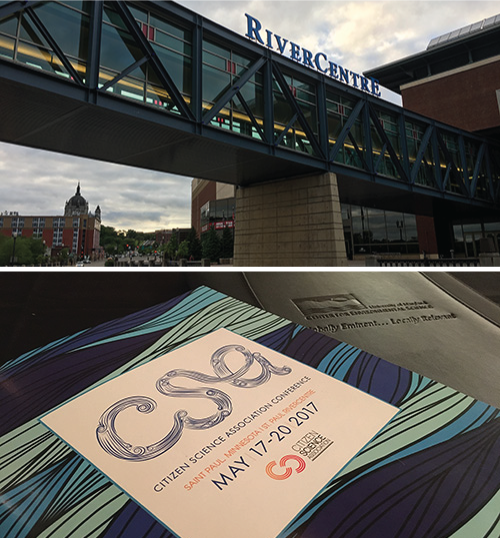
On Wednesday afternoon, Alex and I flew to Minneapolis to meet Caroline at the conference. Caroline co-presented a Communicating Data Workshop, during which she discussed narrative storytelling and the ABT form. Professor Kevin Ripka then led participants through several engaging data visualization activities. He urged us to remember that "no one cares about your data as much as you do" and challenged us to tell, not just show, the stories of our data in order to communicate our core message. For one activity, we were given a data table and were asked to tell the story of the data by designing a user interface. Kevin said "In this room, it's playtime!" and invited us to cast perfectionism aside and get creative. "Don't get stuck on visual design; think about user design. How will someone move through your story?" Participants used the design principles discussed during the workshop to make a "paper prototype" of an online data visualization, and then other participants "clicked" through our webpage to give us an idea of the user experience that we created. What a great activity! My paper prototype is below, and it shows a user clicking 'buttons' to turn on data layers containing information about average wingspan and migration distance for three bird species.
Later that evening, we attended a book panel discussion featuring three authors of recently published books: Citizen Science: How Ordinary People are Changing the Face of Discovery, The Rightful Place of Science: Citizen Science, and Citizen Scientist: Searching for Heroes and Hope in an Age of Extinction. Time to add those to my reading list! The conference opening reception directly followed the panel, and was hosted at the nearby Science Museum of Minnesota. It was fun to check out the Mississippi River Visitor Center, say hello to some of my colleagues, meet new people, and spot some 'famous' faces in the crowd. A huge storm (complete with tornado warnings) kept us at the reception later than originally planned, but there are certainly worse places to be stuck than a science museum!

Thursday morning's keynote speech focused on the Flint water crisis and was co-presented by a citizen scientist and a professional scientist who collaborated to draw national attention to the environmental disaster. The speakers told the story of the water crisis and detailed how citizen scientists engaged their community to highlight an environmental concern and advocate for environmental injustice, eventually earning the support of scientists and fueling legal action. The talk highlighted the importance of strategic and inclusive collaboration, and it was great to start the conference off with such a inspiring success story. After the keynote, I attended sessions on "Designing Collaborative Science Projects" and "Community Empowerment," while Alex and Caroline chose other sessions from among the many interesting options.
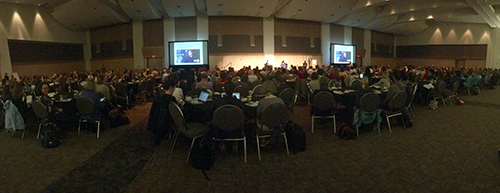
I was very impressed by the diversity of communication styles that were on display during the lunchtime poster session. Poster authors included academics representing several disciplines, along with educators, resource managers, citizen science project organizers and volunteers, government agents, and museum staff. One poster stood out to me as particularly creative and eye-catching because, although posters are traditionally a two-dimensional medium, the author was able to transform their poster into a unique, three-dimensional piece using other materials and artistic design elements. This poster really made an impression and inspired me to think outside of the box and get more creative next time I make a poster!
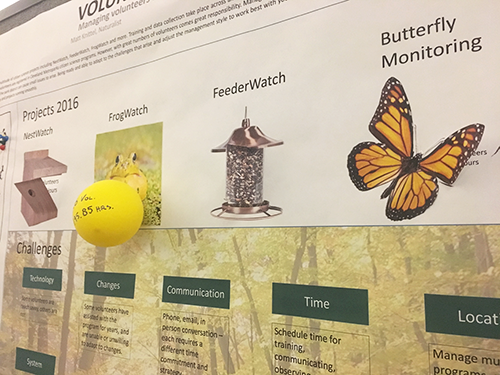
During my first afternoon session, "Understanding Who Participates," the speakers challenged us all to think critically about who participates in citizen science and how we can measure engagement and increase our reach. One of the speakers said, "Gather your experts, but remember we are all experts in something! Identify people's expertise and bring them to the table!" I thought this quote was particularly relevant to the introspective work that we are doing now at IAN in order to better understand our partners and our stakeholder engagement process.
The next session deviated from the typical conference format of three or four talks in one hour. Instead, 16 people lined up at the front of the room and gave very energetic two-minute presentations on various tools (apps, digital platforms, etc.) that support citizen science, and then took seats at individual tables throughout the room. Audience members were then invited to walk around to ask questions and network with the speakers and each other. I thought it was a very interesting and engaging format, and it was great to learn more about the digital infrastructure of some of the other projects out there.
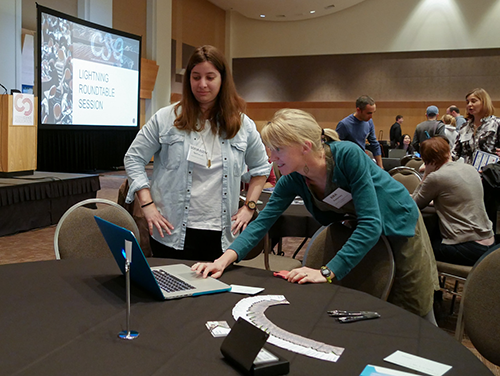
I had the opportunity to present some of my preliminary dissertation research during the last session of the day. During my talk, I identified some of the goals of citizen scientists in the Chesapeake Monitoring Cooperative and professional scientists in the Chesapeake Bay watershed and then highlighted areas of consensus between the two groups and made recommendations for how these groups can most productively collaborate in the future by using effective communication. I was very nervous to give my first talk at an academic conference, but I was excited to have the chance to talk about my research and get some feedback. Also, it was a powerful moment for me because one of my dissertation research mentors was in the room listening to my talk, and the person who introduced us to each other almost exactly two years ago was the session moderator! I enjoyed that opportunity to reflect on how much I have learned and the enriching relationships I have formed since first dipping my toe into the world of Citizen Science.

The final event of the night was a Project Slam, which gave 18 speakers a chance to showcase their new projects or project approaches to the rest of the citizen science community. Each speaker had five minutes to introduce their project, and audience members were asked to vote for their favorite presentations. It was exciting to watch Alex give a presentation on the Chesapeake Monitoring Cooperative! During the Slam, I also met with a group of about 30 other people who are all interested in volunteer water monitoring. The meeting was one of the first times that this group gathered for a face-to-face meeting. Like the broader citizen science community, the volunteer monitoring community is growing, formalizing, and gaining momentum, and I am thrilled to be a part of the excitement!
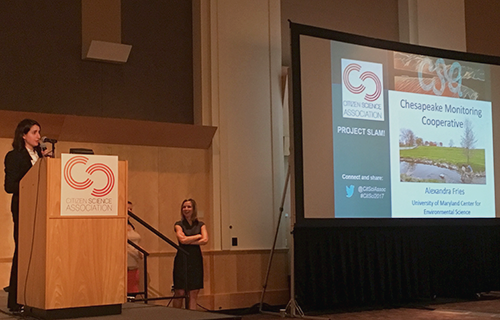
Stay tuned for my next blog post—I will discuss the second half of the conference and also my experience exploring the awesome and inspiring Science Museum of Minnesota, which is now one of my favorite places in the world!
About the author
Suzanne Webster
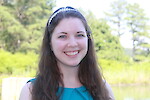
Suzi Webster is a PhD Candidate at UMCES. Suzi's dissertation research investigates stakeholder perspectives on how citizen science can contribute to scientific research that informs collaborative and innovative environmental management decisions. Her work provides evidence-based recommendations for expanded public engagement in environmental science and management in the Chesapeake Bay and beyond. Suzi is currently a Knauss Marine Policy Fellow, and she works in NOAA’s Technology Partnerships Office as their first Stakeholder Engagement and Communications Specialist.
Previously, Suzi worked as a Graduate Assistant at IAN for six years. During her time at IAN, she contributed to various communications products, led an effort to create a citizen science monitoring program, and assisted in developing and teaching a variety of graduate- and professional-level courses relating to environmental management, science communication, and interdisciplinary environmental research. Before joining IAN, Suzi worked as a research assistant at the Marine Biological Laboratory in Woods Hole, MA and received a B.S. in Biology and Anthropology from the University of Notre Dame.

